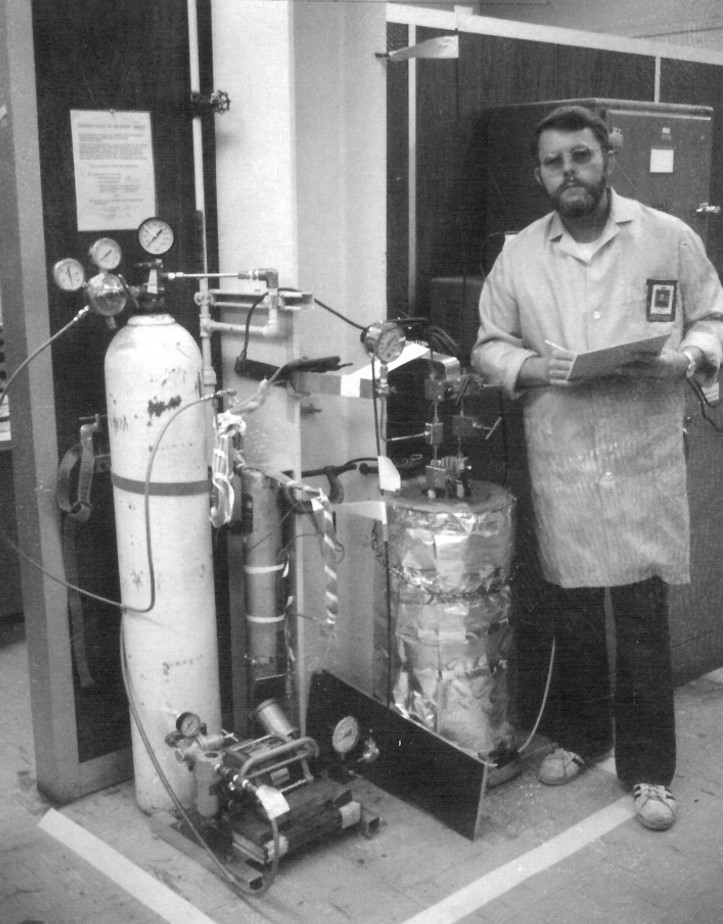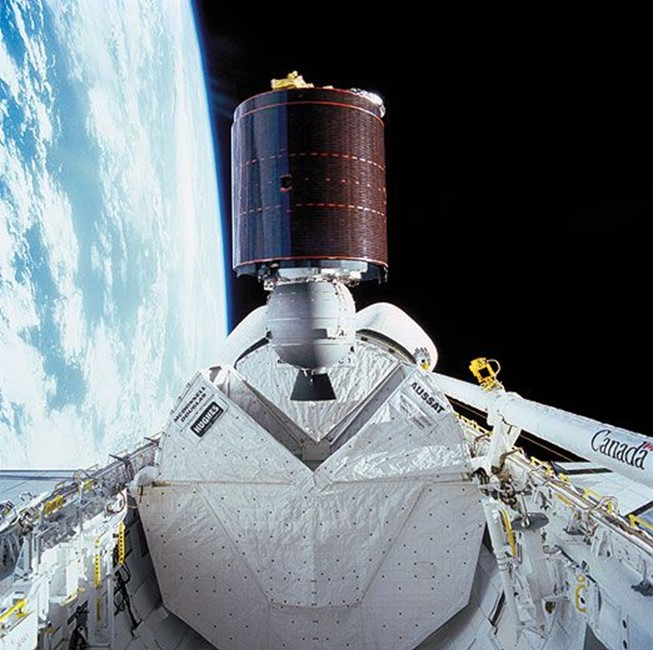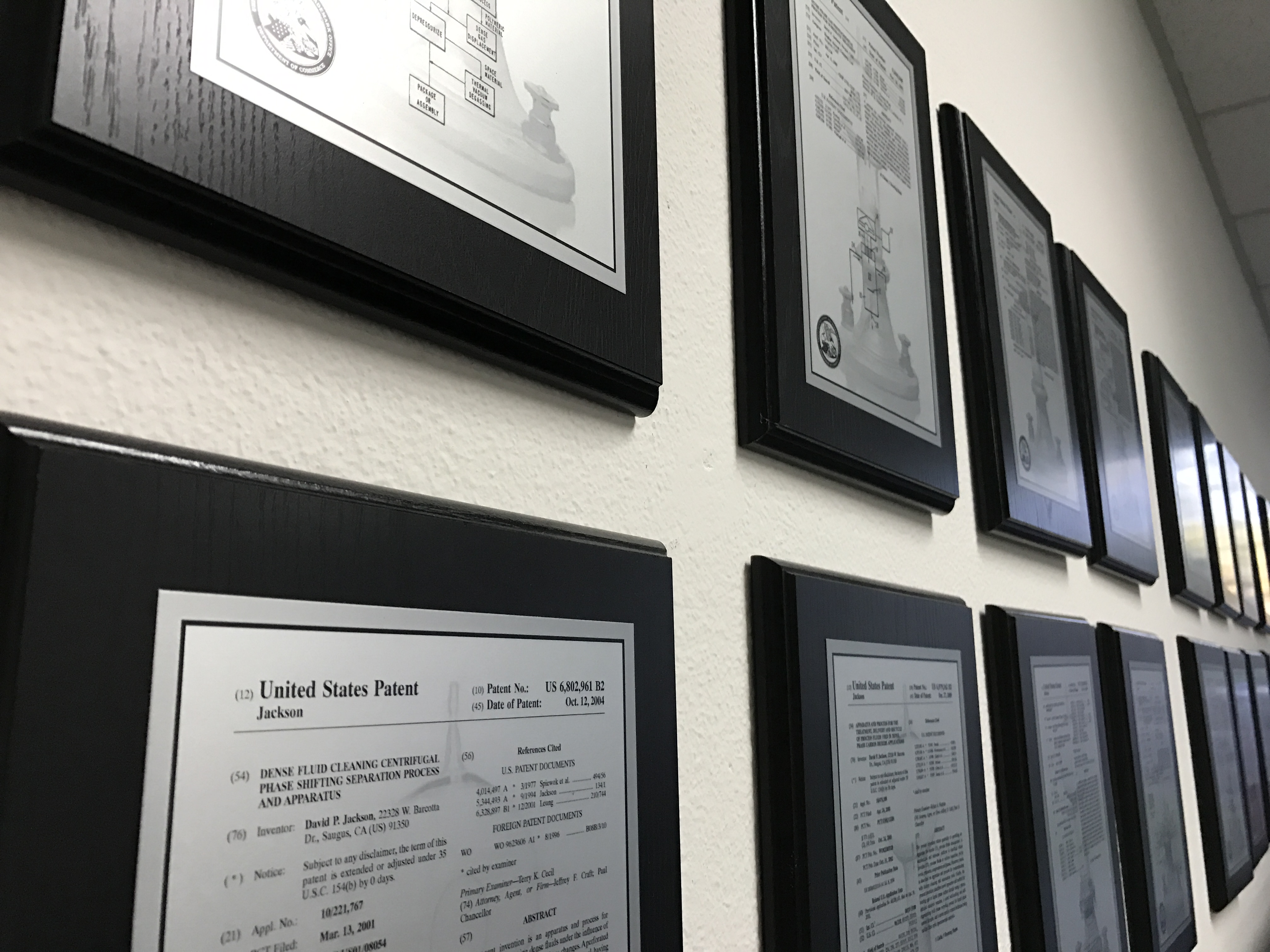CO2 Backstory 1.3.1
Early Supercritical and Liquid CO2 Processes
Mr. Orval Buck
The first CO2-based immersion cleaning system was constructed and tested by Mr. Orval Buck at Hughes Aircraft Company in 1984, essentially adapted from a German supercritical CO2 (scCO2) extraction process for decaffeinating green coffee beans [10]. Shown in Figure 1-4, the first scCO2 cleaning system comprised an insulated high pressure vessel (retrofitted isostatic press) which was temperature-regulated using flexible silicone-insulated heating tape and a thermostatic controller. A contaminated production part was loaded into the vessel through a topside threaded closure. Following purging with CO2 gas to remove internal atmosphere (i.e., residual air and moisture), the vessel was fluidized using a high pressure pneumatic pump supplied by a cylinder of high pressure liquid CO2. The vessel was compressed to various supercritical fluid conditions ranging between 2,000 and 5,000 psi with the pressure vessel heated to a temperature of between 40 and 60 degrees C.












